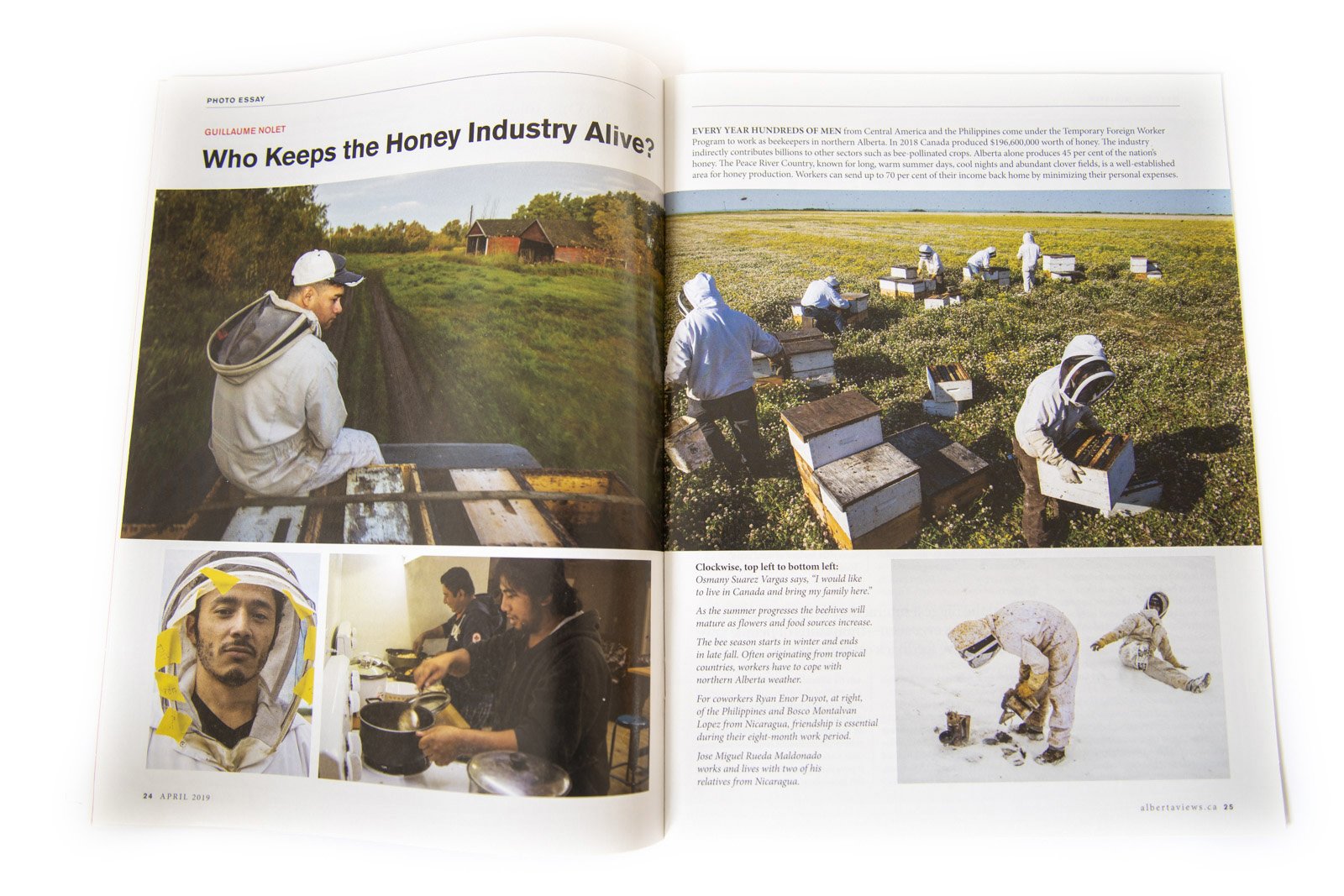
Who Keeps the Honey Industry Alive?
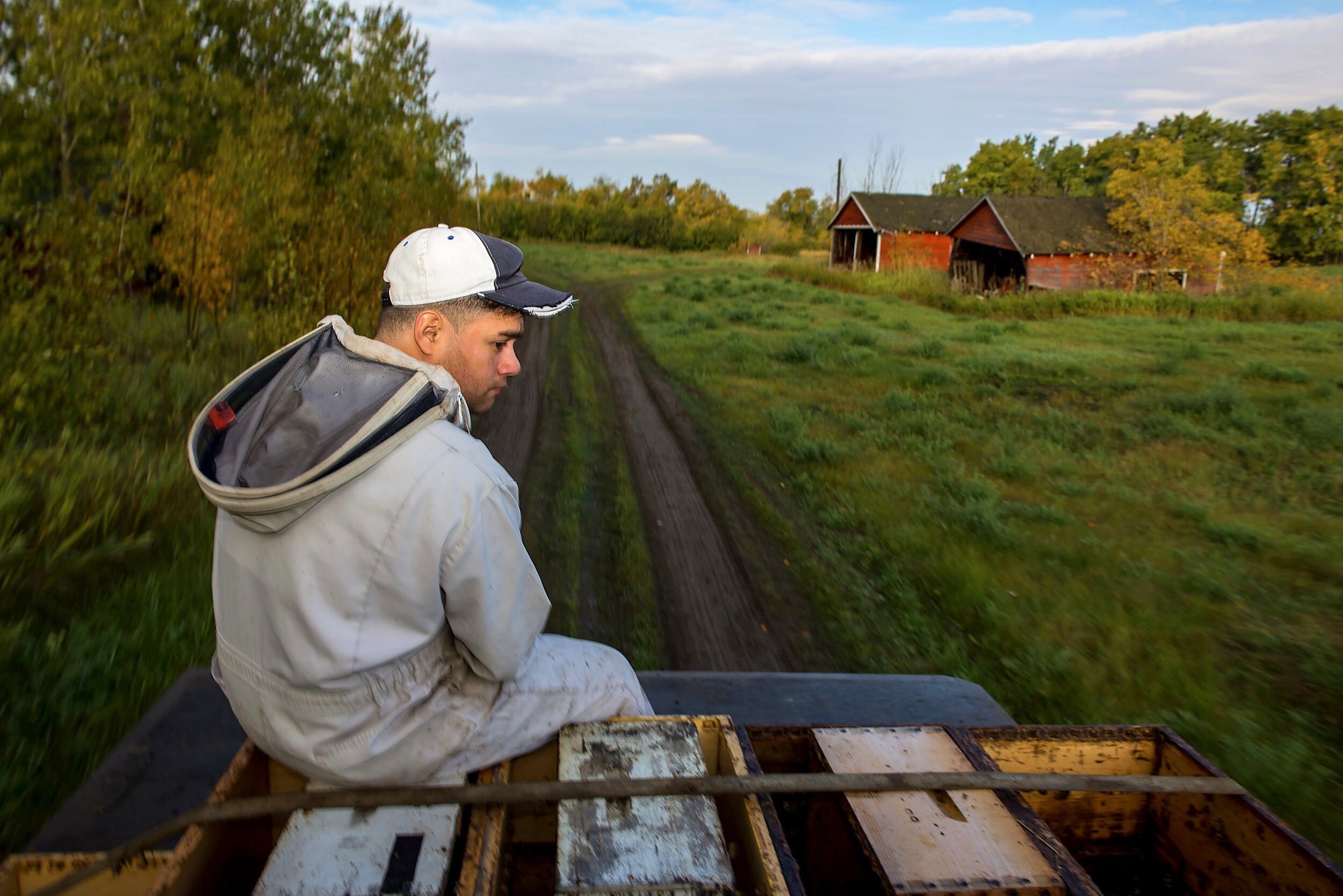
“I would like to live in Canada and bring my family here. I like the country very much, it’s safe and there is lots of work here for everybody,” Osmany Suarez Vargas.
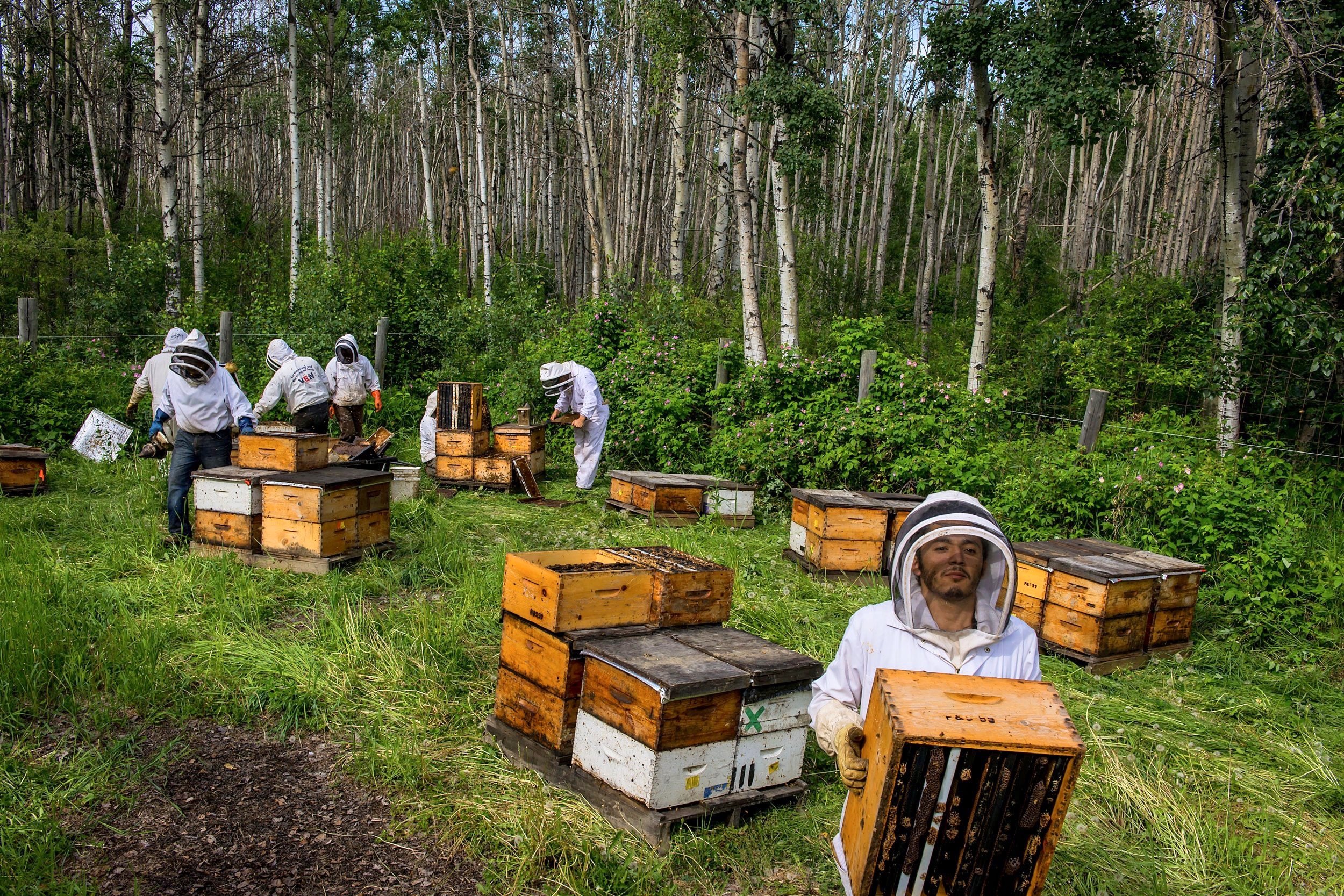
Alberta alone generates up to 45% of the total honey production in Canada. In 2018, the country produced $196.6 million of honey, an increase of more than 16% from 2016 (Statistics Canada).
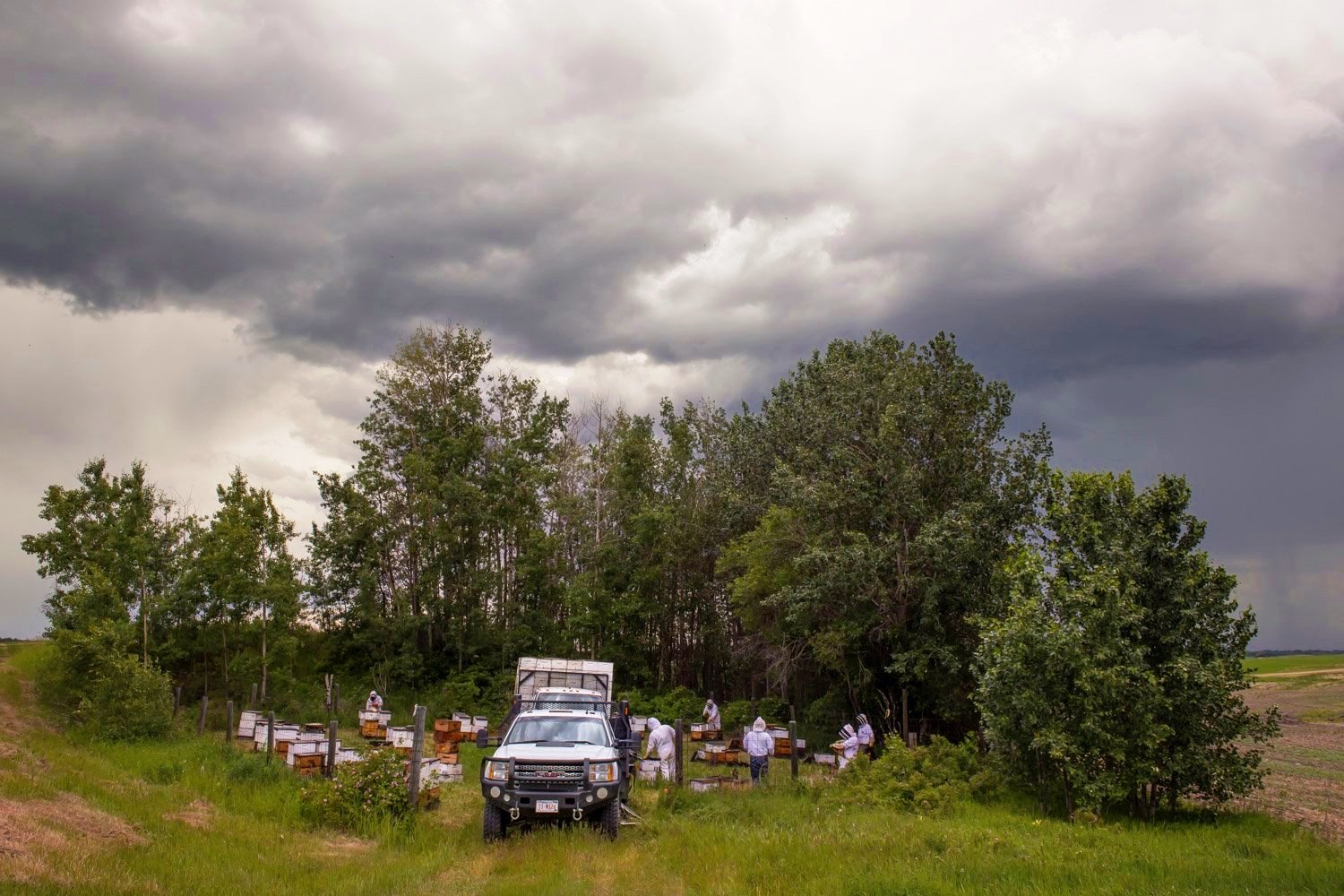
Known for long warm summer days, cool nights and abundant clover fields, the Peace River Country is a well-established area for honey production in the country.
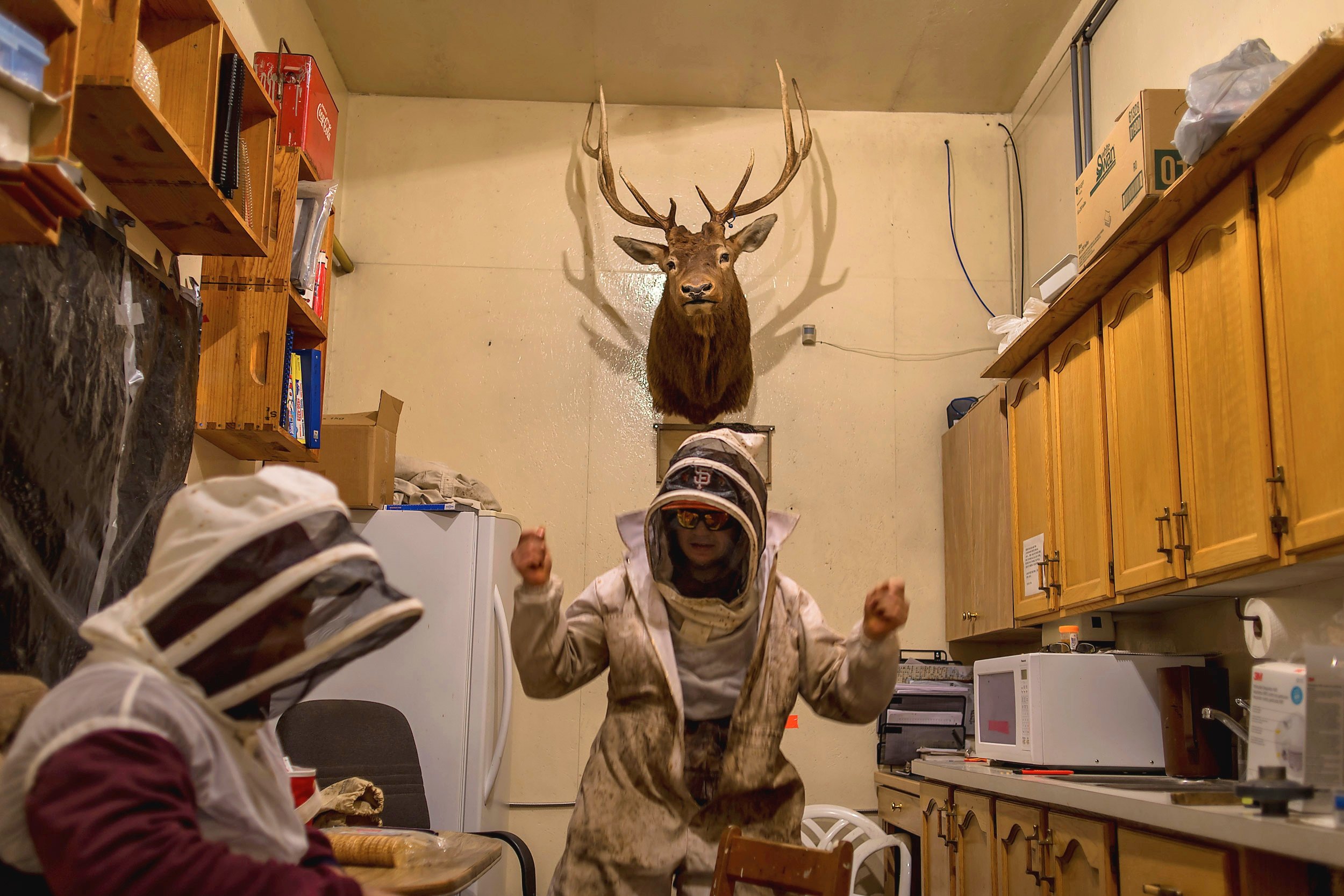
For the majority of foreign workers the primary goal is to save money to provide for their family. By minimizing their personal expenses, workers can send up to 70% of their income back home. For comparable work, the amount of money they make in Canada is more than double what they would make in their native country.
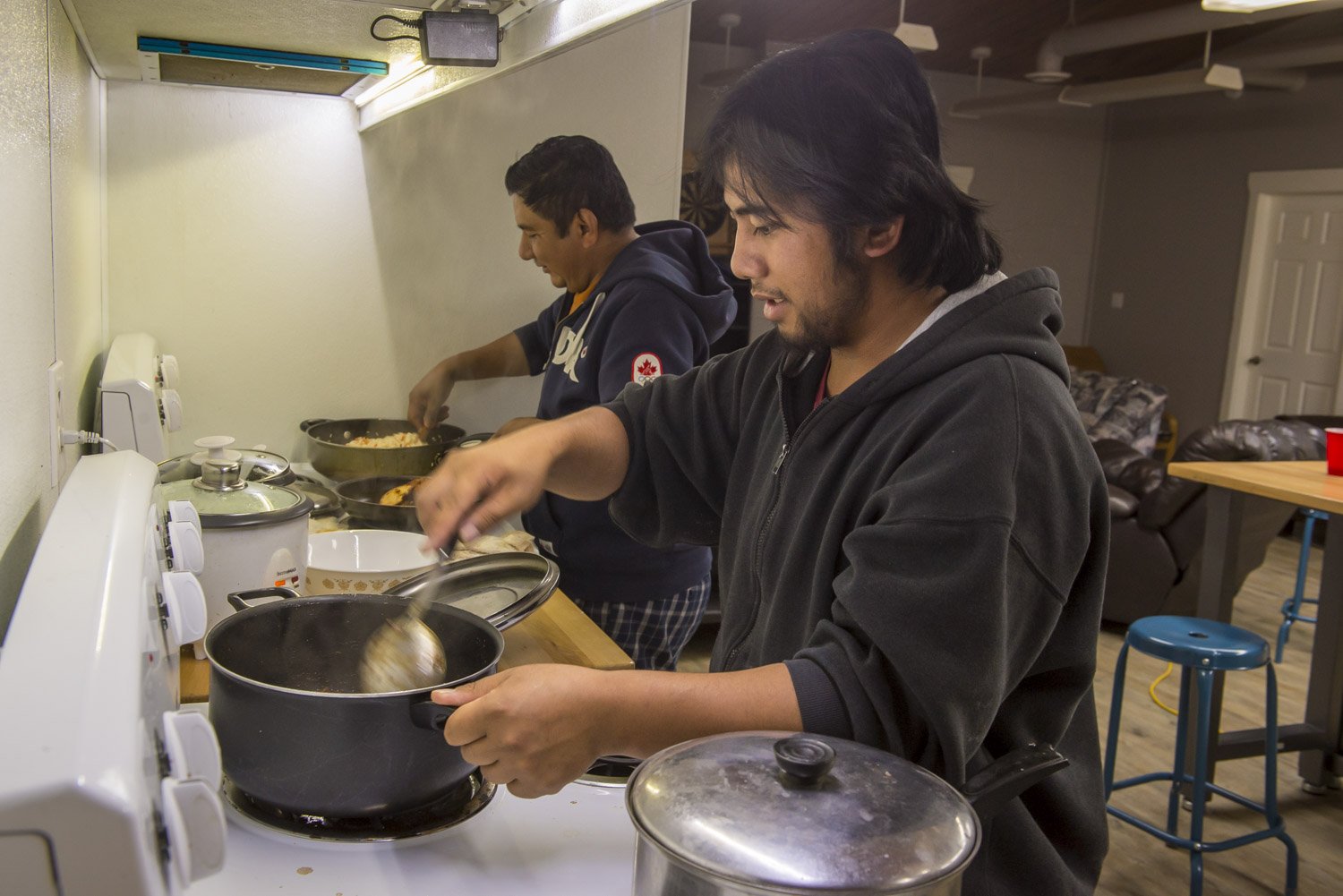
For coworkers Ryan Enor Duyot (right) of the Philippines and Bosco Montalvan Lopez from Nicaragua, friendship is essential in order to keep a healthy living environment during their eight-month work period.
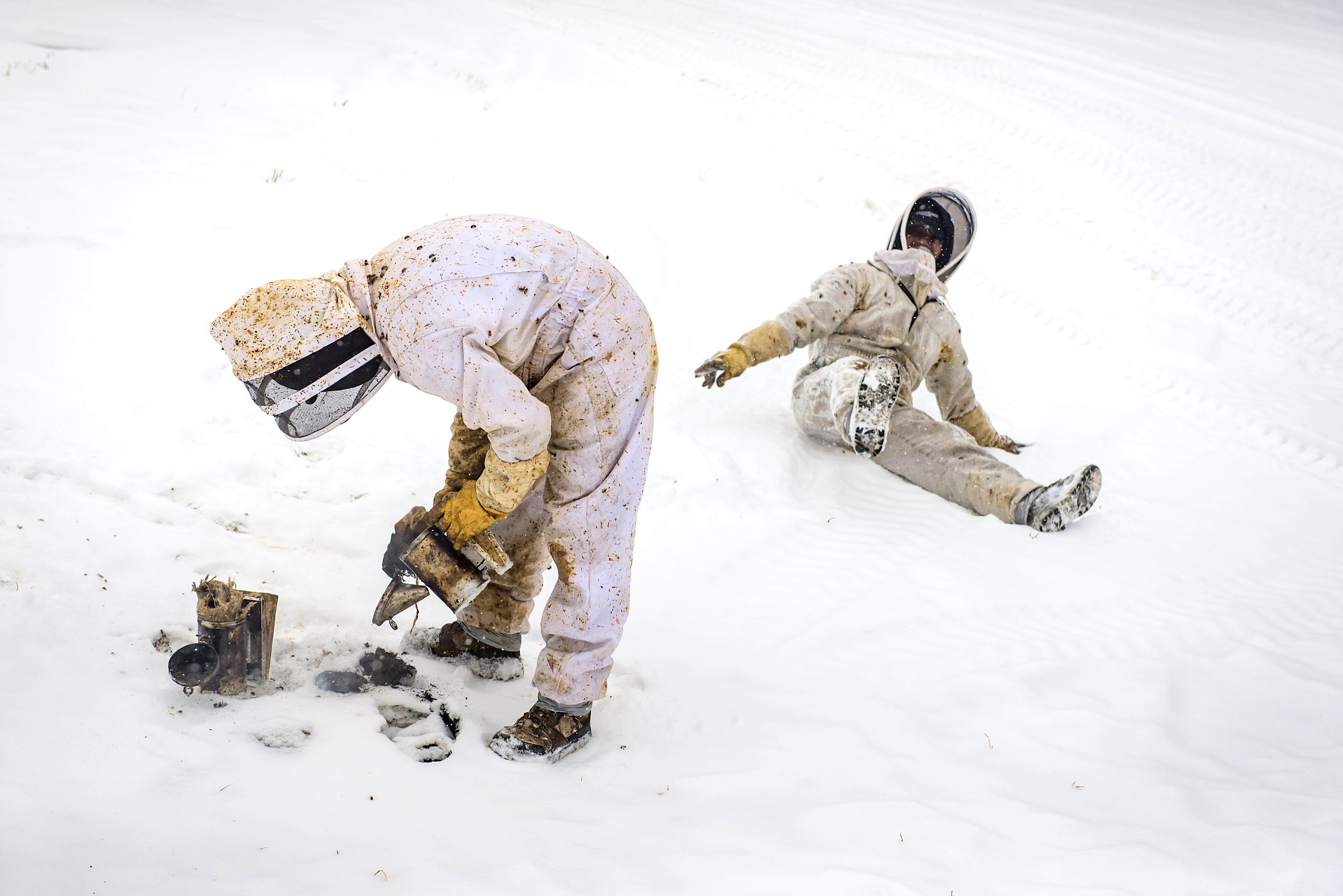
The bee season starts in winter and ends in late fall. Often originating from tropical countries, workers have to cope with Northern Alberta weather; snow and freezing temperatures as low as -30 Celsius.
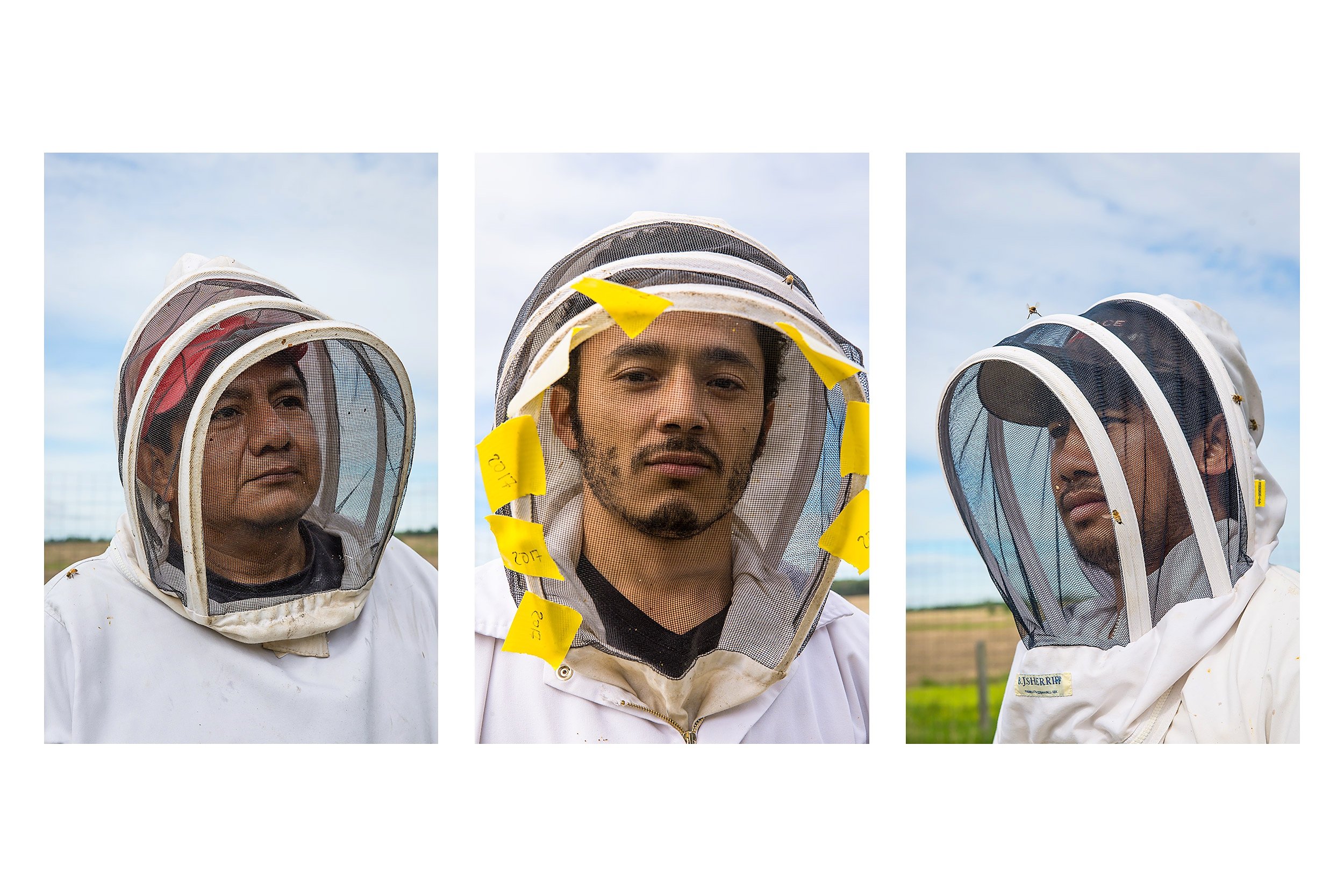
For the past 19 years, Bosco Montalvan Lopez (at left), 42, has been making the trip to Northern Alberta from his native Nicaragua to work as a beekeeper.
Although Jose Miguel Rueda Maldonado (center), 28, works and shares a trailer home with two of his relatives from Nicaragua, he misses his immediate family and can’t wait to return home after his contract ends.
A cab driver in the Philippines, Ryan Enor Duyot (at right), 33, questions the idea of becoming a Canadian resident. The process can take up to three years and with the uncertainty of his family being able to adapt well in Canada, Duyot hesitates to apply for his residency.

Cesar Montiel, 51, talks to his wife daily via Skype. Since the birth of their two sons, Montiel’s wife stays at home in Nicaragua, not able to join her husband in Canada during his eight-month contract. Now with social media workers can easily stay in touch with their family. “I can see my wife and my kids everyday, I feel close to them”, says Montiel.
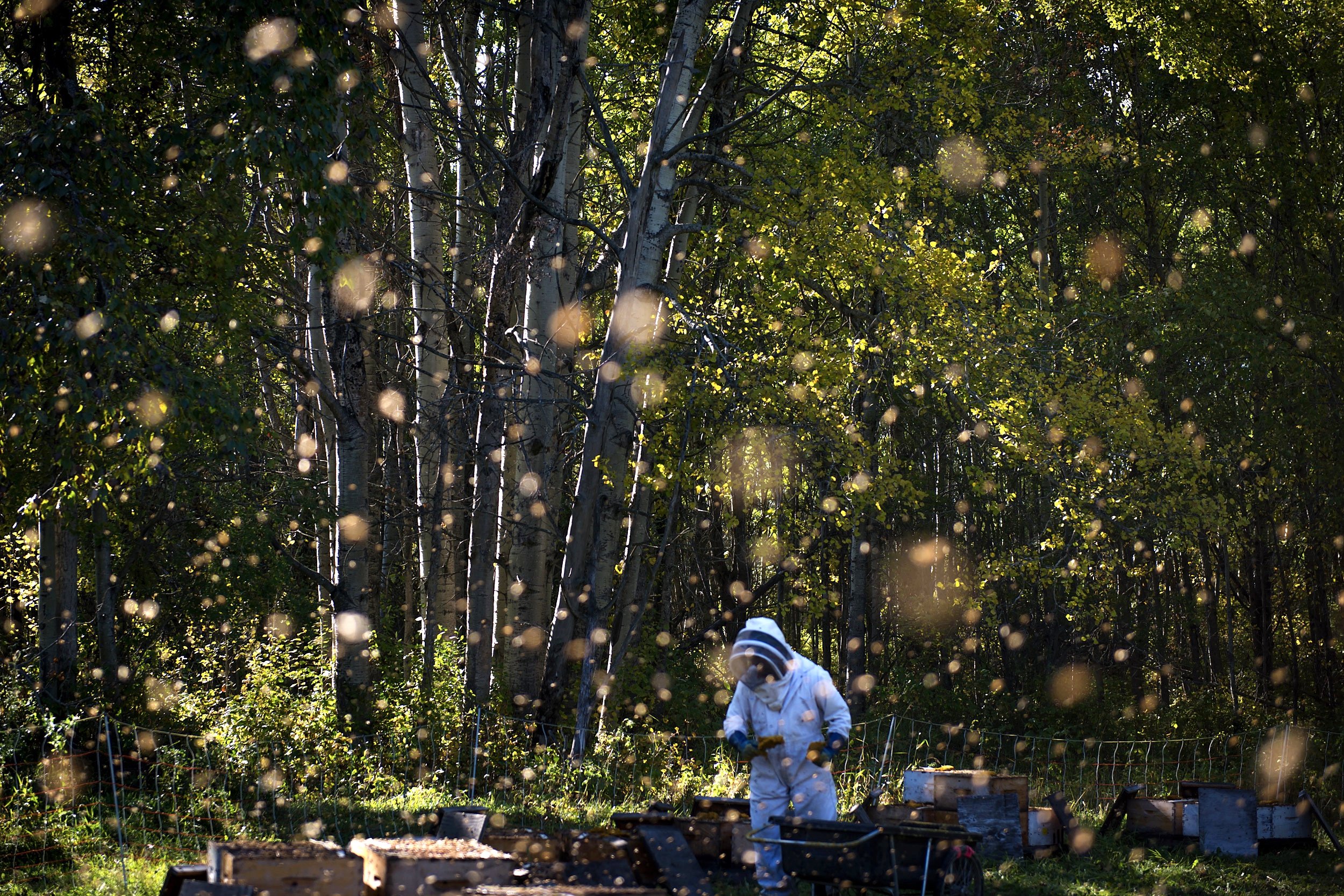
A beekeeper is surrounded by honeybees while working on a bee colony in Northern Alberta.
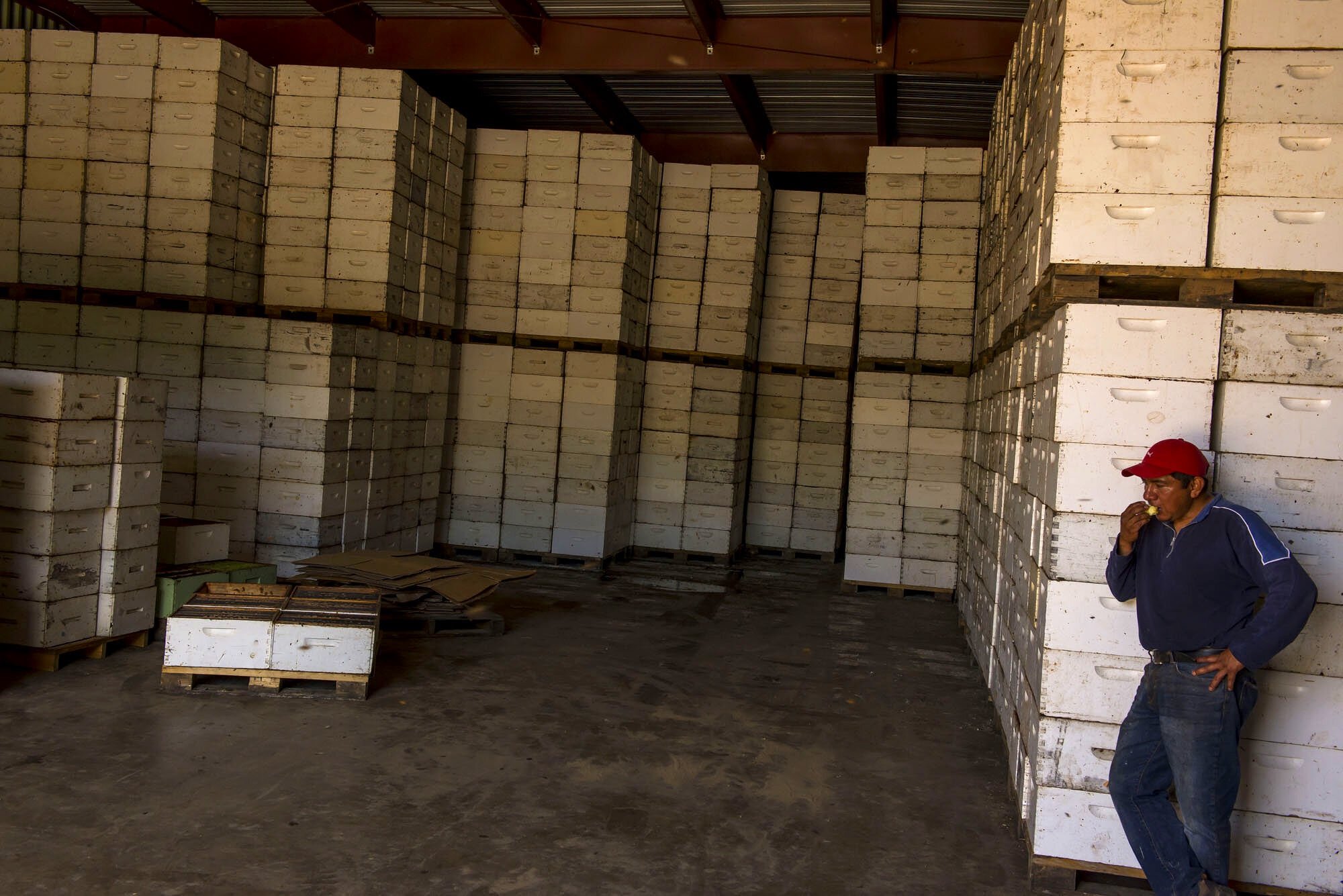
By the end of the summer, workers are tired and look forward to their return home.

Many french communities in Northern Alberta in the Peace Country region, such as the village of Girouxville, population 219, are active in the honey farming industry. Because beekeeping can be physically demanding with long workdays, frequent overtime and occurs in remote locations, rarely will Canadians apply for the job.
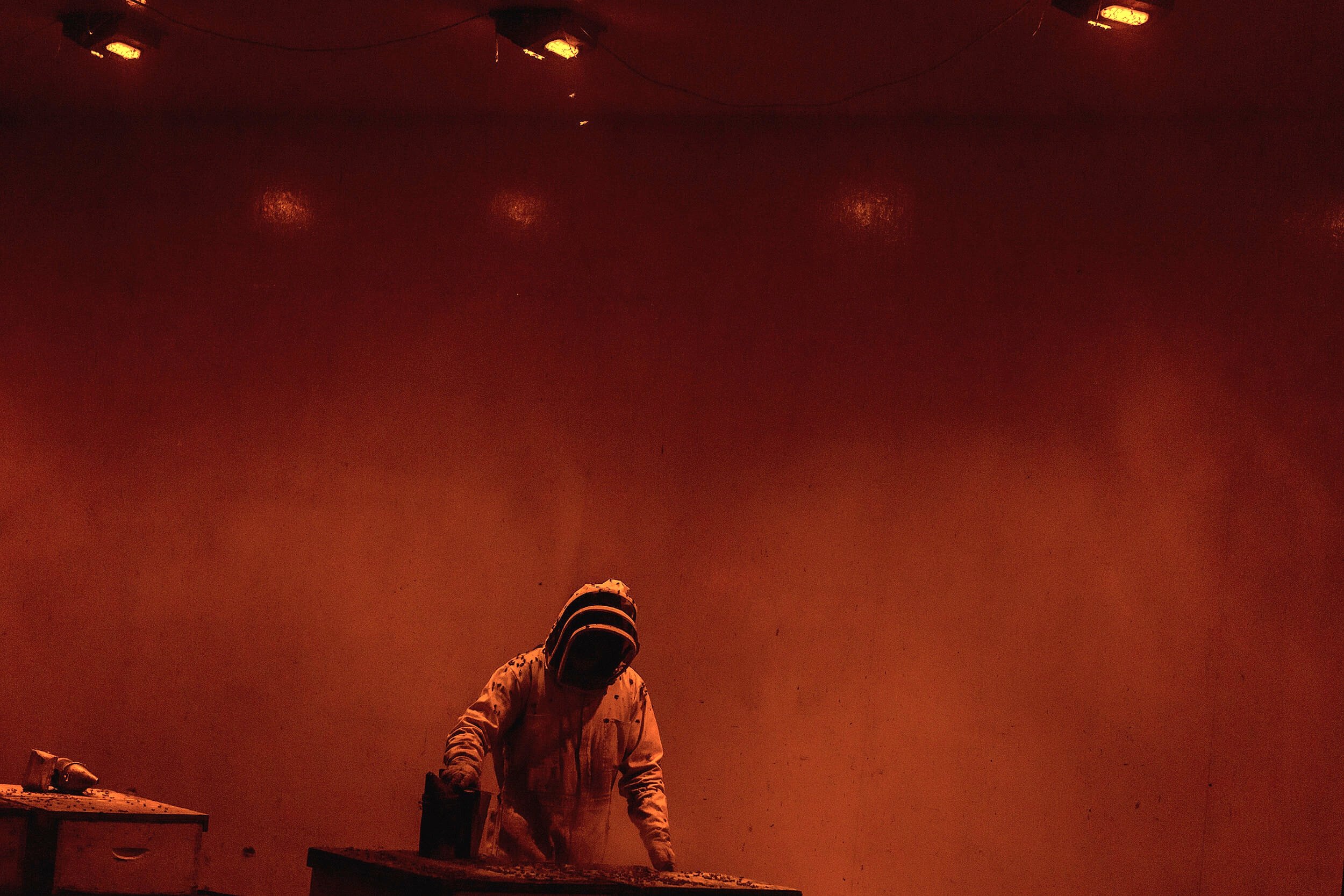
During winter, many honey producers will store their beehives before shipping them to B.C. where they will be used as pollinators for a variety of fruit crops. Then in late spring, bees are shipped back to Alberta where they will be used as honeybees.
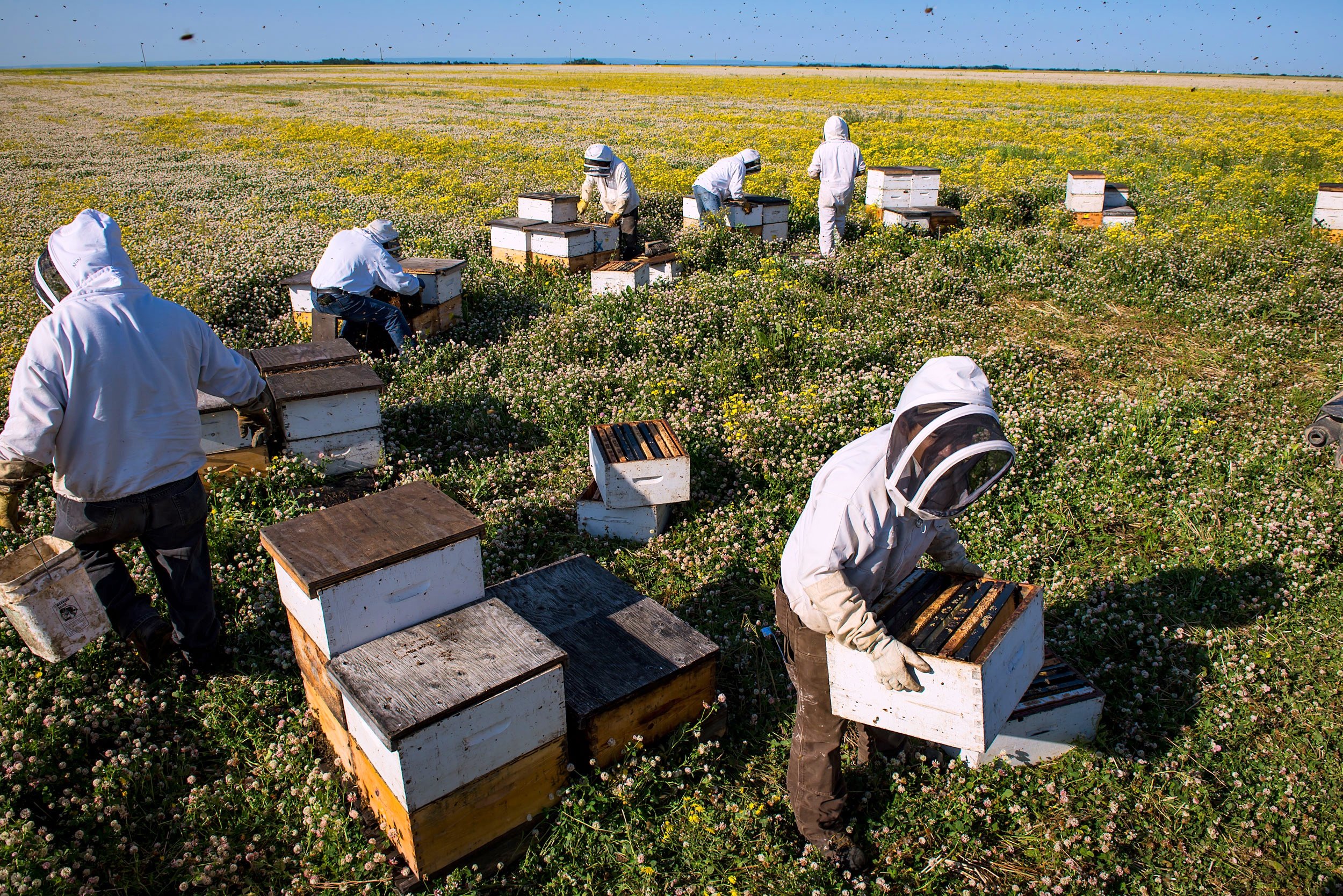
As the summer progresses the beehives will mature as flowers and food sources increase. Just before harvest, around the middle of July, hives can reach up to eight boxes in height and yield up to 200 pounds of honey per colony.
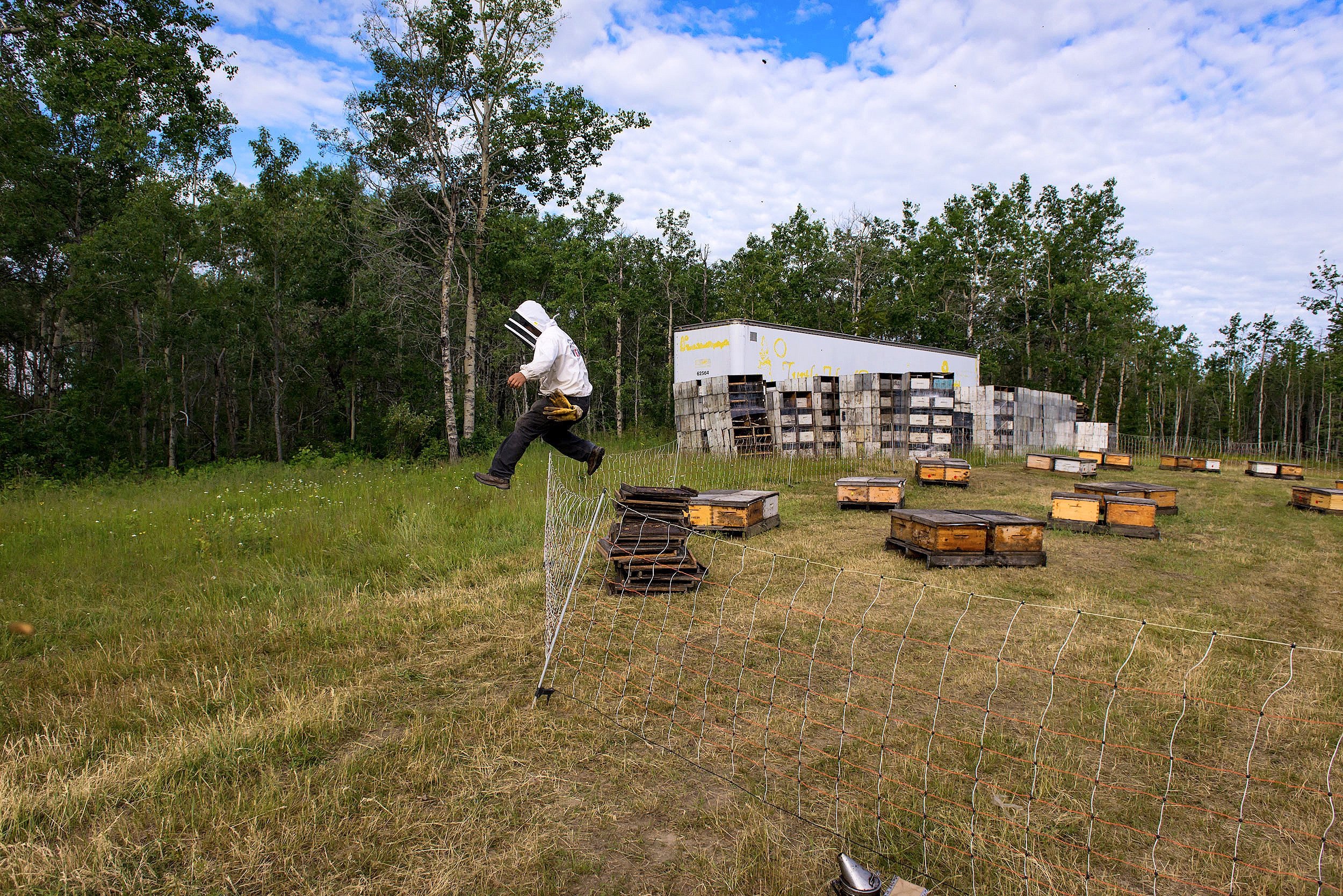
“My workers are here to work, want to get ahead in life, and get a better life. The majority of Canadians don’t have the same mentality anymore. We have the —I deserve this, I don’t need to work for this— kind of mentality,” Michel Paradis.
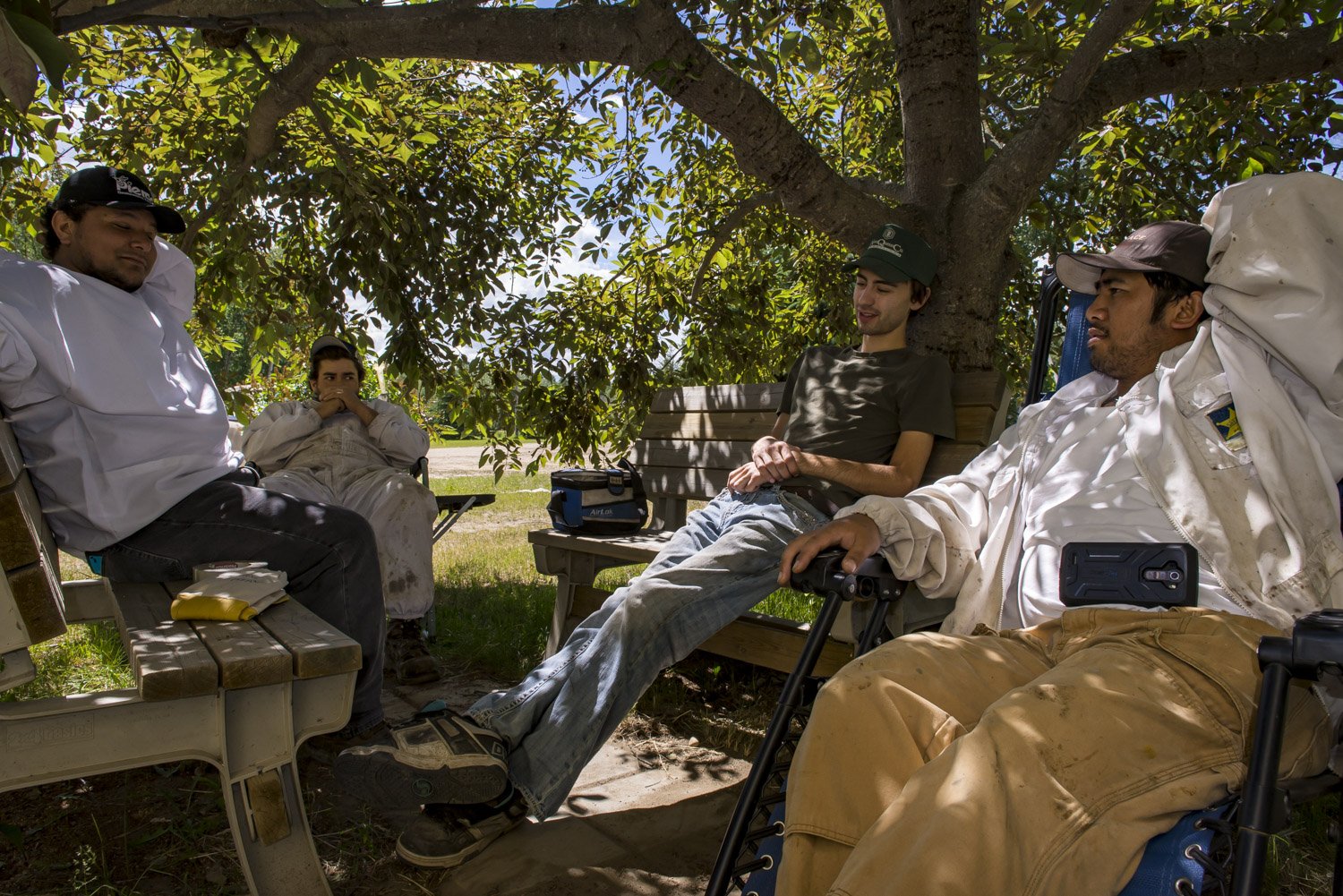
An 8th generation beekeeper, Tyler Paradis (2nd from right) will in a few years take over the family business. “I think of my staff as much as family. It’s important that they feel happy in the position that they are in, without them we’re nothing,” Tyler Paradis.

Although Jose Miguel Rueda Maldonado, 28, works and shares a trailer home with two of his relatives from Nicaragua, he misses his immediate family and can’t wait to see them.
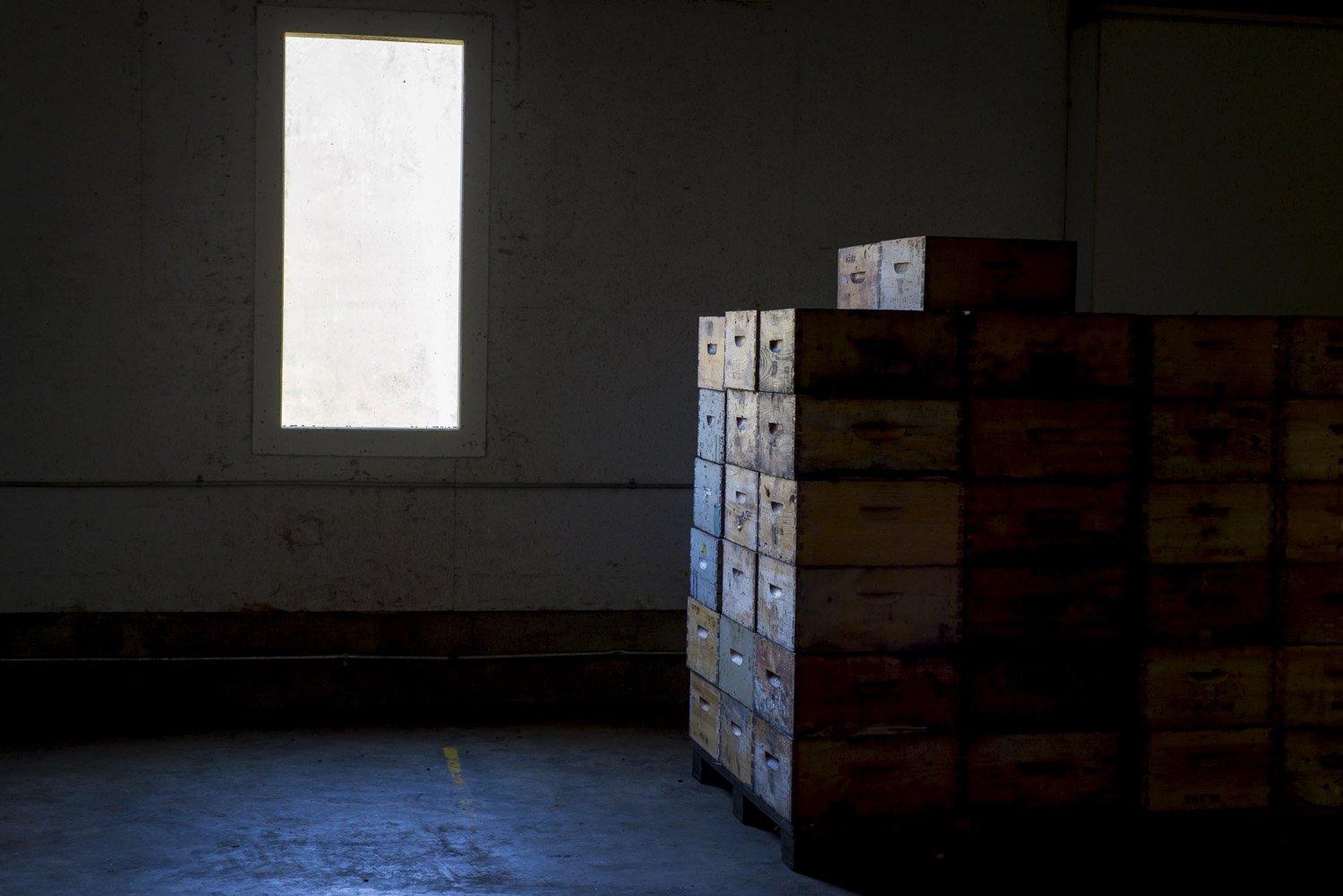
The majority of foreign workers are hired to work for a period of seven to eight months. Certain routes exist for those who want to apply for permanent residence. Once they have met government requirements they will need to find full time work year-round which will often results in longer periods away from their loved ones.
Who Keeps the Honey Industry Alive?
Every year hundreds of men from Central America and the Philippines come under the Temporary Foreign Worker Program to work as beekeepers in northern Alberta. In 2018 Canada produced $196,600,000 worth of honey. The industry indirectly contributes billions to other sectors such bee-pollinated crops. The province of Alberta produces up to 45% off Canada’s honey. The Peace River Country, known for long warm summer days, cool nights and abundant clover fields, is a well-established area for honey production. Workers can send up to 70% of their income back home by minimizing personal expenses.
